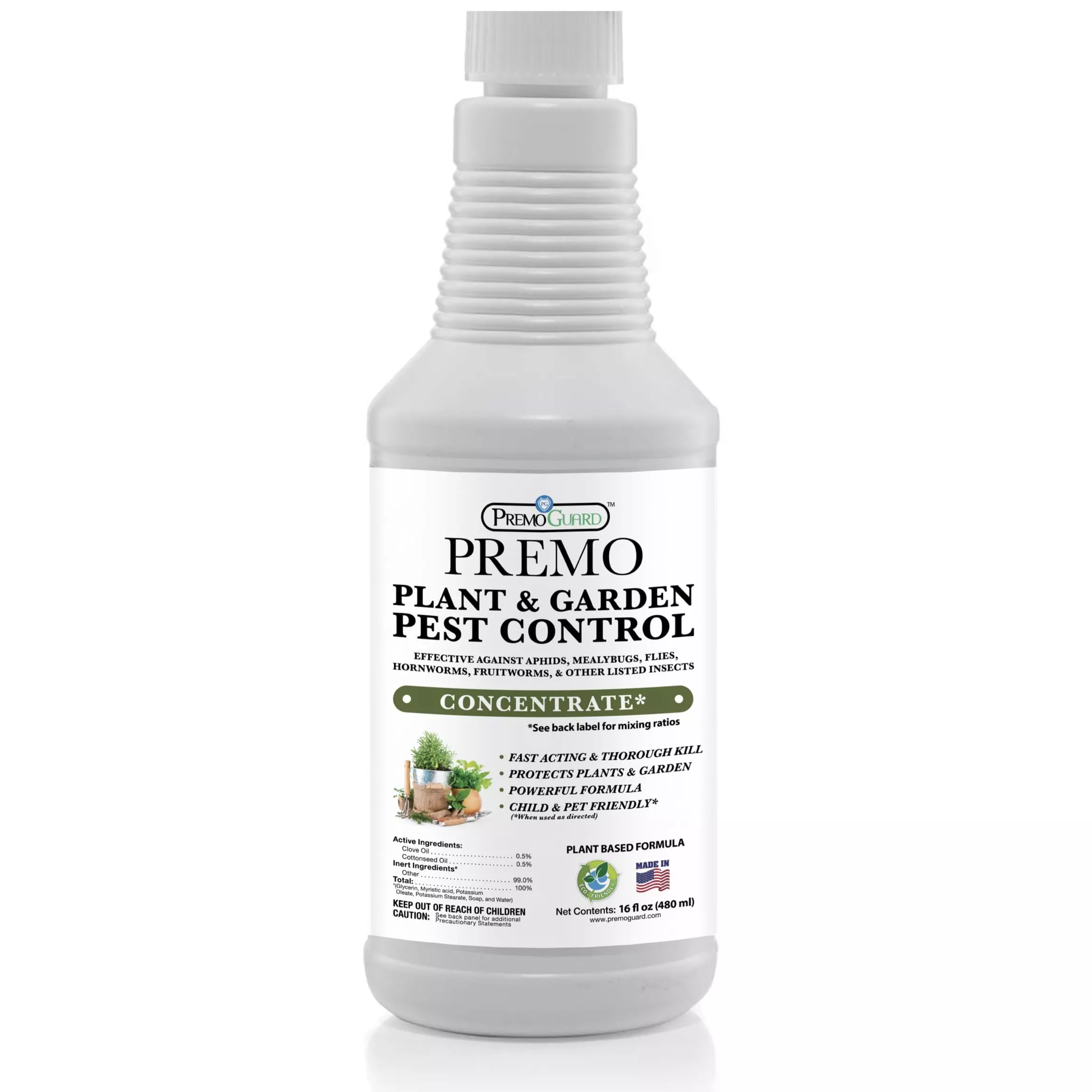Spider mites can devastate plants quickly. Effective pest control solutions are essential to protect your garden or crops.
Spider mites are tiny, sap-sucking pests that can cause significant damage to plants. They thrive in hot, dry conditions, making greenhouses and indoor gardens particularly susceptible. Early detection and prompt action are crucial to prevent infestations. Solutions include introducing natural predators like ladybugs, using insecticidal soaps, and maintaining proper plant care.
Regularly inspecting plants and ensuring they receive adequate water and nutrients can also help keep spider mites at bay. Implementing these strategies can save your plants from the destructive effects of spider mites, ensuring a healthy and thriving garden.

Credit: www.amazon.com
Identifying Spider Mites
Spider mites are tiny pests that can harm your plants. They are hard to see with the naked eye. Knowing how to spot them helps protect your garden. Let’s dive into the signs and common types of spider mites.
Signs Of Infestation
- Yellow or white spots on leaves
- Webbing on plants
- Leaf drop or curling leaves
- Plants look dull or unhealthy
Check the underside of leaves for tiny moving dots. These are spider mites. Use a magnifying glass to see them better.
Common Species
| Species | Description |
|---|---|
| Two-Spotted Spider Mite | Has two dark spots on its back. Common in gardens. |
| Red Spider Mite | Reddish color. Often found on fruit trees. |
| Carmine Spider Mite | Bright red and very small. Attacks many plants. |
Each species can cause different levels of damage. Identifying the type helps in choosing the right treatment.
Understanding Their Lifecycle
To effectively control spider mites, you must understand their lifecycle. Knowing each stage helps in targeting them better. Let’s explore their lifecycle in three stages: Egg, Larval, and Adult.
Egg Stage
Spider mites lay eggs on the underside of leaves. These eggs are tiny, almost invisible to the naked eye. It takes about three days for the eggs to hatch. During this time, the eggs are very vulnerable.
| Stage | Duration | Characteristics |
|---|---|---|
| Egg | 3 days | Very tiny, laid on leaf undersides |
Larval Stage
Once hatched, spider mites enter the larval stage. This stage lasts about five days. During this period, they start feeding on plant cells. The larvae are small and light green. They move around to find food.
- Lasts about five days
- Feed on plant cells
- Small and light green
Adult Stage
After the larval stage, they become adults. Adult spider mites are larger and can be red or green. They continue feeding on plants. They also start laying eggs, beginning the cycle again. This stage is critical for pest control.
- Adults are larger and can be red or green
- Continue feeding on plants
- Start laying eggs
Understanding these stages helps in designing effective pest control strategies. Each stage has its vulnerabilities, which you can exploit.
Natural Predators
Spider mites are pesky pests that can damage plants quickly. Using natural predators is a safe and effective way to control them. Introducing these beneficial insects can restore the balance in your garden. This method avoids harmful chemicals and supports a healthy ecosystem.
Beneficial Insects
Several insects can help control spider mite populations. The most common are ladybugs, predatory mites, and lacewings. These insects feed on spider mites, reducing their numbers naturally.
- Ladybugs: Ladybugs are voracious eaters of spider mites. They can consume hundreds of mites daily.
- Predatory Mites: These mites are natural enemies of spider mites. They hunt and eat spider mites, keeping their population in check.
- Lacewings: Lacewing larvae, also known as aphid lions, feed on spider mites. They are effective in controlling many small pests.
Encouraging Biodiversity
Biodiversity in your garden helps maintain a healthy ecosystem. Planting a variety of plants attracts beneficial insects. Diverse plants provide food and shelter for these predators.
Here are some tips to encourage biodiversity:
- Plant a variety of flowers: Different flowers attract different insects. Marigolds, daisies, and sunflowers are good choices.
- Include native plants: Native plants support local insect populations. They are well-adapted to the local climate and soil.
- Avoid pesticides: Pesticides can kill beneficial insects. Use natural methods to control pests instead.
- Provide water sources: Insects need water to survive. Bird baths and small ponds can help.
Using natural predators and encouraging biodiversity can keep your garden healthy. These methods are eco-friendly and effective. Your plants will thrive without harmful chemicals.

Credit: phive8.com
Chemical Control Methods
Spider mites can wreak havoc on gardens and crops. Chemical control methods offer effective solutions to keep these pests in check. Using chemicals can be a quick way to manage spider mites. Below, we explore two main chemical control methods: insecticidal soaps and miticides.
Insecticidal Soaps
Insecticidal soaps are an eco-friendly way to combat spider mites. These soaps work by breaking down the outer layer of the mites. This causes them to dehydrate and die.
- Easy to use: Simply spray the soap solution on affected plants.
- Safe for plants: Insecticidal soaps do not harm most plants.
- Non-toxic: These soaps are safe for humans and pets.
For best results, apply insecticidal soap in the early morning or late evening. Repeat the application every 5-7 days until the mites are gone.
Miticides
Miticides are specialized chemicals designed to target spider mites. They offer a powerful solution for severe infestations.
| Miticide Type | Description |
|---|---|
| Contact Miticides | Kill mites on direct contact. |
| Systemic Miticides | Absorbed by plants, killing mites when they feed. |
When using miticides, follow the product instructions carefully. Overuse can lead to resistant mite populations. Rotate between different miticides to maintain effectiveness.
Miticides may also harm beneficial insects. Use them as a last resort and combine with other pest control methods.
Organic Solutions
Organic solutions help control spider mites without harming the environment. They use natural ingredients to keep plants healthy and pest-free. Explore these effective methods to tackle the spider mite menace.
Neem Oil
Neem oil is a powerful organic solution for controlling spider mites. It comes from the seeds of the neem tree and works by disrupting the pests’ life cycle.
- Mix 2 teaspoons of neem oil with 1 quart of water.
- Add a few drops of liquid soap to help the mixture stick to the leaves.
- Spray the solution on affected plants, covering all surfaces.
Neem oil also prevents spider mites from feeding and reproducing. This keeps your plants safe and healthy.
Horticultural Oils
Horticultural oils are another effective organic solution. These oils smother spider mites, blocking their airways and causing them to die.
- Mix horticultural oil with water following the product instructions.
- Spray the mixture on infested plants, ensuring thorough coverage.
Horticultural oils are safe for plants and beneficial insects. They do not leave harmful residues.
| Solution | Method | Benefits |
|---|---|---|
| Neem Oil | Spray on leaves | Disrupts life cycle |
| Horticultural Oils | Spray on plants | Smothers mites |
These organic solutions are safe and effective. Use them to keep your garden free from spider mites.
Preventative Measures
Spider mites can devastate plants. Preventative measures help keep them away. This section covers two key steps: Regular Monitoring and Proper Plant Care.
Regular Monitoring
Regularly check your plants. Look for spider mites and their damage. Use a magnifying glass to spot them.
- Inspect leaves for tiny dots.
- Check the undersides of leaves.
- Look for webbing between leaves.
Early detection stops infestations from growing. Make monitoring a habit. Check plants weekly for best results.
Proper Plant Care
Healthy plants resist spider mites better. Proper care is crucial for plant health.
| Care Aspect | Action |
|---|---|
| Watering | Water plants regularly. Keep soil moist but not wet. |
| Fertilizing | Use balanced fertilizer. Follow the recommended schedule. |
| Pruning | Remove dead leaves and stems. Promote air circulation. |
Good care practices strengthen plants. Strong plants fend off pests more effectively.
Follow these steps to keep spider mites at bay. Healthy plants and vigilant monitoring are key. Stay ahead of spider mite infestations.
Environmental Controls
Spider mites can wreak havoc on your plants. Using environmental controls helps manage these pests naturally. This approach reduces the need for chemicals. Let’s explore two key methods: Humidity Management and Temperature Regulation.
Humidity Management
Spider mites thrive in dry conditions. Increasing humidity can deter them. Here’s how to manage humidity effectively:
- Maintain a humidity level of 50-60% around your plants.
- Use a humidifier to add moisture to the air.
- Mist your plants with water regularly.
- Place water trays near plants to increase humidity.
These steps make the environment unsuitable for spider mites. Humidity affects their ability to reproduce. High moisture levels help control their population.
Temperature Regulation
Temperature plays a crucial role in spider mite control. They prefer warm environments. Regulating temperature can help reduce their numbers.
| Temperature | Effect on Spider Mites |
|---|---|
| Below 70°F (21°C) | Slows down reproduction |
| Above 80°F (27°C) | Increases reproduction rate |
Keep your plants in cooler areas. Use fans to lower the temperature. Avoid placing plants in direct sunlight. Maintain an optimal temperature to keep spider mites at bay.
Integrated Pest Management
Integrated Pest Management (IPM) is a comprehensive approach to pest control. It combines different methods to keep pests under control. This approach is effective for managing spider mites. It minimizes the use of harmful chemicals. It also ensures the safety of your plants and the environment.
Combining Methods
IPM uses a combination of methods to tackle spider mites. These include biological, cultural, mechanical, and chemical controls. Using multiple methods increases success rates.
- Biological Controls: Introduce natural predators like ladybugs.
- Cultural Controls: Practice crop rotation to disrupt mite life cycles.
- Mechanical Controls: Use water sprays to knock off mites.
- Chemical Controls: Apply miticides only as a last resort.
Long-term Strategies
For long-term success, develop a comprehensive plan. Regular monitoring and documentation are essential.
- Regular Monitoring: Inspect plants frequently for early signs of spider mites.
- Documentation: Keep records of pest occurrences and control measures.
- Preventive Measures: Implement strategies like maintaining plant health and cleanliness.
By following these strategies, you ensure a sustainable pest control approach. This reduces the likelihood of future infestations.
| Control Method | Action |
|---|---|
| Biological | Introduce natural predators |
| Cultural | Practice crop rotation |
| Mechanical | Use water sprays |
| Chemical | Apply miticides as last resort |

Credit: www.facebook.com
Frequently Asked Questions
What Are Spider Mites?
Spider mites are tiny pests that infest plants. They feed on plant sap, causing discoloration and damage. Identifying them early is crucial for effective control.
How Do I Identify Spider Mite Damage?
Spider mite damage appears as yellow or white spots on leaves. Webbing may also be present. Check the undersides of leaves for tiny, moving dots.
What Causes Spider Mite Infestations?
Spider mite infestations are often caused by hot, dry conditions. Over-fertilization and lack of natural predators can also contribute. Regular monitoring can help prevent outbreaks.
How Can I Prevent Spider Mites?
To prevent spider mites, maintain proper plant care. Keep plants well-watered and dust-free. Introduce natural predators like ladybugs. Regularly inspect plants for early signs.
Conclusion
Effectively managing spider mites is crucial for healthy plants. Use natural remedies and regular monitoring for best results. Remember, early detection and consistent care are key. Implementing these strategies can save your garden from infestation. Stay proactive, and your plants will thrive.
Keep your garden pest-free with these simple solutions.



